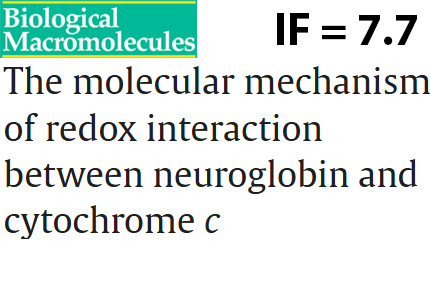
The molecular mechanism of redox interaction between neuroglobin and cytochrome c
Neuroprotective activity of neuroglobin (Ngb) is presumably based on its redox interaction with cytochrome c (Cyt c), the mechanisms of which have not yet been elucidated. Authors developed a new methodological approach to study the electron transfer between heme proteins based on Raman spectroscopy. We studied the conformational changes in the Cyt c heme and the effect of the protein microenvironment of Cyt c and Ngb hemes on electron transfer between them using developed approach. Obtained data allowed us to propose a step-by-step mechanism of interaction between Ngb and Cyt c. Understanding the mechanisms of interaction between Ngb and Cyt c is necessary for future practical applications related to the therapy of neurodegenerative diseases. The results are published in the International Journal of Biological Macromolecules. Learn more
News 
- The Future Technologies Award “VYZOV” in the “Breakthrough” category has been awarded to Ilia Yampolsky
science news
XII.15 For deciphering the molecular mechanisms of bioluminescence and creating glowing plants
- Identification of animal venoms by Raman spectroscopy combined with principal component analysis
science news
XI.11 Scientists from the Department of Molecular Neuroimmune Signaling of the Institute of Bioorganic Chemistry RAS, together with colleagues from the Prokhorov General Physics Institute RAS using Raman spectroscopy carried out a comparative analysis of various animal venoms and a number of different nature substances (not-venoms), and the applicability of this method for the identification of animal venoms was demonstrated.
- Biotechnologies based on the fungal bioluminescence pathway
science news
XI.10 The journal Trends in Biotechnology published a review devoted to biotechnologies based on the fungal bioluminescence pathway (FBP). Unlike luminescent reporter systems that require the addition of a substrate, FBP uses the natural metabolite caffeic acid to maintain continuous, autonomous luminescence. This allows for the production of autonomously luminescent living organisms and overcomes the key limitations of previous technologies. The review examines recent advances in the creation of luminescent plants and FBP-based biosensors and discusses the potential applications of this reporter system in science and the economy.

